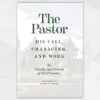How Christians Can Combat Slavery Today
The word “slavery” conjures many images in our minds: Africans bent over cotton in the Deep South; filthy ships stuffed with shackled humans; and this year, perhaps, the moving film Amazing Grace about William Wilberforce’s 20-year battle to abolish Britain’s slave trade.
Wilberforce succeeded in abolishing the slave trade in 1807, and the film commemorates the important anniversary. Later, slavery itself was abolished, and is now illegal everywhere in the world. But shockingly, slavery still exists and flourishes today. The difference is that the victims are more numerous—perhaps 27 million in the world—and are worth far less than America’s old chattel slaves.
That’s the jarring discovery I made while researching a piece for WORLD Magazine earlier this year. A modern slave could be a teenager kidnapped for prostitution, an Afghan girl forced into marriage, or a low-caste Indian laborer held in debt bondage, all examples in my February article, “Let My People Go.” Their faces and trials are many.
Broadly speaking, modern-day slaves are either in the commercial sex industry or in forced labor. The United States has an estimated 10,000 slaves, according to abolitionist group Free the Slaves. Half are in the sex trade, and half are in forced labor. Across the world, between 600,000 and 800,000 people are trafficked across borders into slavery; between 14,500 and 17,000 of those enter the United States.[1]
Two hundred years ago devoted Christians such as Wilberforce led the way to abolition. Today we might also ask, what can we do to combat slavery? How can the local church help?
With that in mind, I have compiled a few practical suggestions and points to consider, courtesy of modern-day abolitionists who are already hard at work. Put simply, we can do much just by acting locally and working with people we already know.
About 80 percent of the world’s trafficking victims are women and girls, and most of them end up in the sex business. Christians understand that prostitution, pornography, and other distortions of sex are sinful and damaging. But we need to go further. To understand sex slavery, we should make no distinction between “voluntary” prostitutes and “involuntary” trafficking victims.
One could argue that women who “choose” sex work are exposed to the same degradation and coercion trafficking victims experience. That’s often true, but the deeper problem is that, legal or not, commercial sex products—be they dirty magazines, strip clubs, or brothels—all end up feeding the demand for victims. An invaluable primer on this is Demand, a new web documentary by Shared Hope International. (They have two versions; one shows more sin than the other).
Legalizing prostitution in the Netherlands was supposed to make its workers safer. Instead, it has swelled demand for sex, encouraging traffickers to bring in more women and girls from poorer European countries and the rest of the world.
Sex traffickers follow a common pattern. They promise girls jobs or schooling in a new, wealthier country. Once across the border, the traffickers snatch their passports, weaken them with violence and rape and force them to sell their bodies.
If we understand that “voluntary” prostitution and trafficking are part of one larger evil, we are better equipped to fight it. In our communities, it means we can tackle the local sex industry and know that we may help trafficking victims. This is largely unchartered territory for churches, however, so we need to approach it carefully.
Below are pointers gleaned from Lisa Thompson, who directs the Salvation Army’s Initiative Against Sexual Trafficking. She is one of the most faithful, gutsy, and determined abolitionists I know.
1. Home is where the start is
Examine your own community. Flip open the yellow pages and see what they advertise. Massage parlors and escort services may be legal, but they are often fronts for prostitution. Learn where the strip clubs and prostitution corridors are. Cities that are hubs for travelers, businessmen, and immigrants are obvious prostitution points. The FBI estimates about 300,000 children are at risk for entering prostitution, and identified fourteen cities where child prostitution is highest.[2] They are orphans or runaways, come from abusive homes, or have suffered sexual abuse, making them prime quarry for pimps.
2. Making contact
Once you know where they are, how do you reach out to prostitutes? This one is tricky, but consider a street ministry. It will be tough, maybe even risky work, so talk to local community organizations that have done it for years. Most are not Christian, but they know their stuff, and it’s another way to cultivate relationships.
Women in your church—only they can really attempt this—might go out to sidewalks or strip clubs where prostitutes and strippers work. They can develop friendships with the women, which opens the door to evangelization. Along the lines of Prison Fellowship’s Angel Tree for families of convicts, plan a church meal or event for the workers. Lisa warns, however: “People might expect a Damascus road conversion, but that’s not the norm.”
3. Exit strategy
When a prostitute or trafficking victim leaves the business, one of their greatest needs is a safe house where they can readjust to normal life. The women may be fearful and untrusting from years on the street, and may need drug or alcohol rehabilitation and counseling. Churches can provide the transitional housing themselves, or work alongside a trusted local ministry or organization. The idea is to maximize your aid, not reinvent the wheel, Lisa says.
4. Going global
Though the United States has its problems, other countries bear most of the slavery. India, for example, has 20 million of the world’s 27 million slaves. If we want to help slaves around the world, we need to think strategically. If your church already knows a ministry or missionaries working in a country, start with them. They will know best local needs, and may well know an indigenous Christian church or group that you can support.
That’s how Ann Buwalda, U.S. director of the Jubilee Campaign, found a ministry to sponsor in Bombay’s red light district. Rev. K. K. Devaraj runs Bombay Teen Challenge, for the children of prostitutes. When he finds them, they are often sick and skeletal, some with HIV, forced to cower under beds as their mothers service clients above. Many now thrive at Devaraj’s sanctuary, going to school and escaping prostitution and drugs. Some of his boys have grown up to attend Bible school. In picking such a ministry to support, Ann says, you don’t have to go with the big names.
When I was in college in Texas, I listened to an itinerant boys choir at my campus Baptist church. The kids were from Zambia, my home country, and they sang a cappella. Little did I know they were slaves.
A Baptist missionary named Keith Grimes gathered the boys, aged 11 to 17, from a Zambian slum to tour America, earn an education and earn money for their families. Instead, they worked grueling hours and never saw a cent as Grimes pocketed donations. Grimes died and the boys were eventually freed. The youngest of them, orphan Given Kachepa, now campaigns against modern slavery.
Victims of slavery, especially forced labor, are camouflaged in public. In the United States, most forced labor victims are immigrants. Many may have crossed the border illegally to work on farms or in other manual labor, only to find their new employer insists they first “pay off” the cost of transporting them into the country. The debt never diminishes, and the workers find themselves trapped.
As with sex trafficking, local groups can help churches identify labor victims and provide for their needs. An important difference, however, is that labor victims often won’t need the same type of counseling. Several are “just men who want to get back to work,” explains Austin Choi-Fitzpatrick of Free the Slaves. Churches can help them do that.
Slavery takes so many forms today it can be daunting to think about, let alone fight against. But where there are the poor and vulnerable in our own communities, we will likely find trafficking victims. We need to do our research and stay alert, and we may yet find ways to share the gospel of Christ.
1 2007 Trafficking in Persons Report, U.S. Department of State.
2 Atlanta, Chicago, Dallas, Detroit, Las Vegas, Los Angeles, Miami, Minneapolis, New York, San Diego, San Francisco, St. Louis, Tampa, and Washington, D.C. See June 7, 2005, Congressional Testimony before the Helsinki Commission, retrieved 10/09/07.








